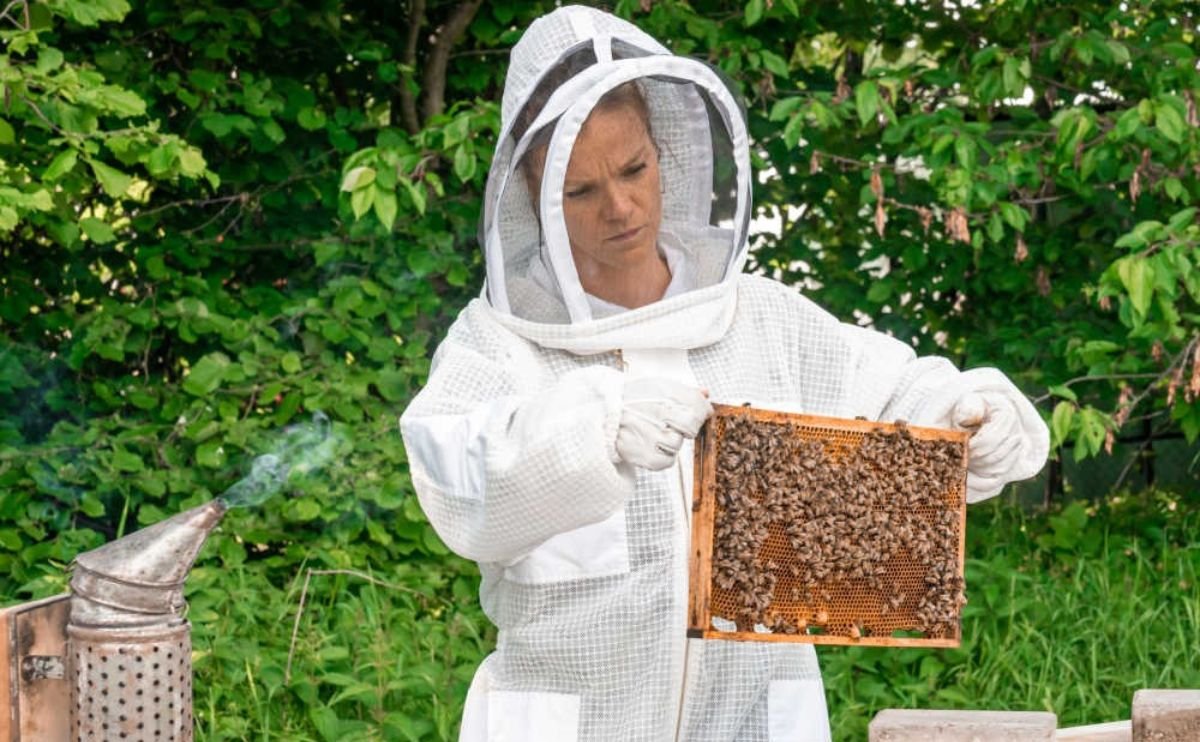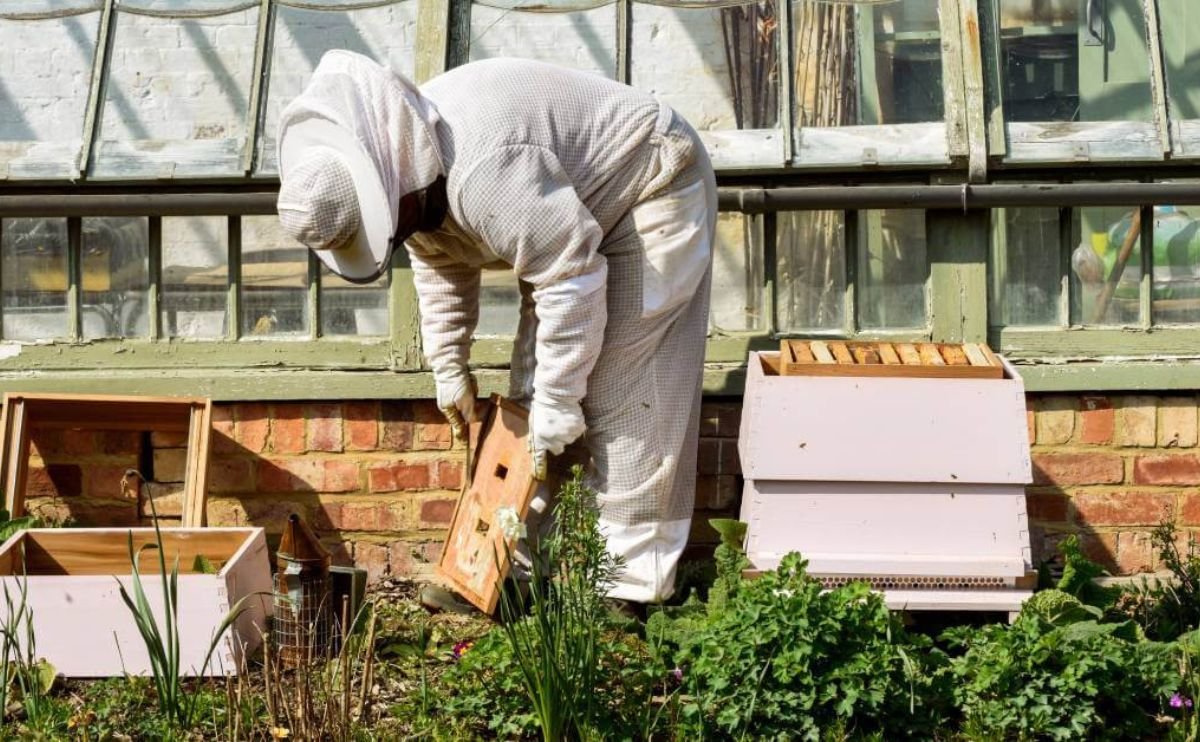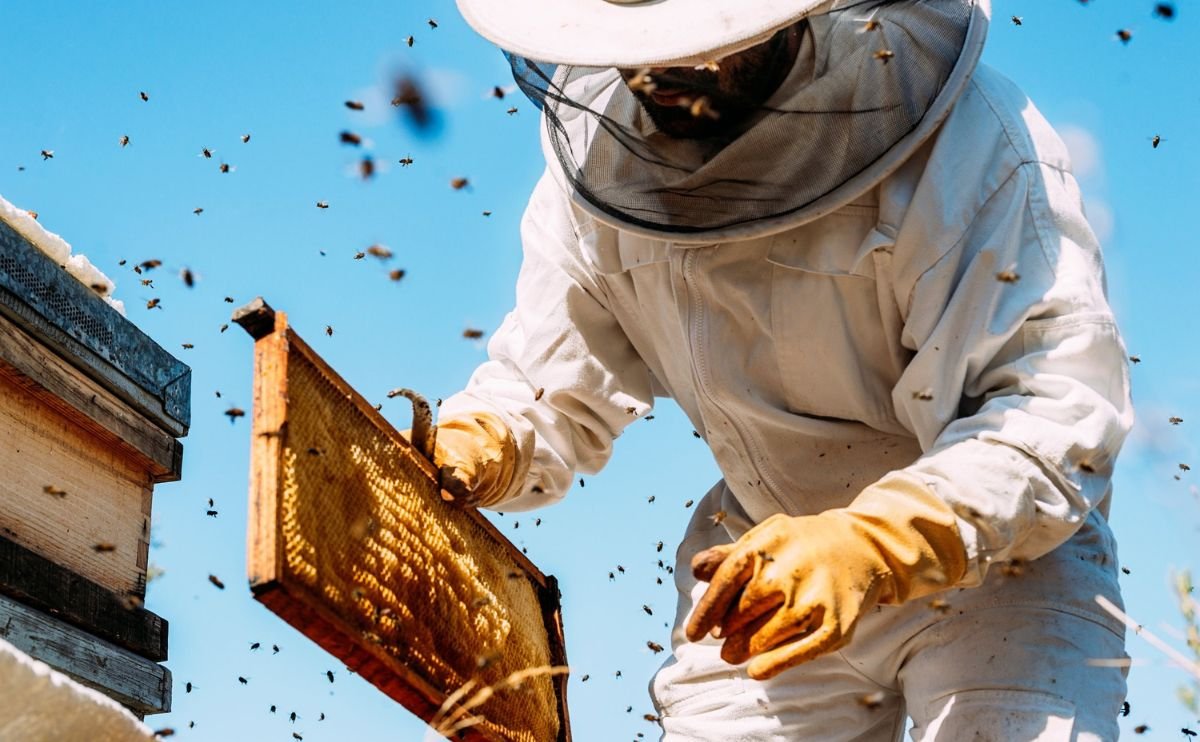Blog
Extending Your Gear’s Life: A Comprehensive Guide to Beekeeping Suit & Glove Care

Your beekeeping suit and gloves function as essential gear that protects both you and your colonies while fostering your confidence among the hives. Opting for quality brands, such as Beekeeper Collection, demonstrates foresight, yet that foresight requires ongoing maintenance to translate into long-term value and safety. This guide to beekeeping suit and glove care provides the procedures and mind-set to preserve the integrity of your protective equipment from one season to the next.
Table of Contents
ToggleWhy Proper Gear Care Is Non-Negotiable?
Envision your suit as personal armor tailored to the apiary environment. Like any critical tool, its protective properties diminish without appropriate attention. Neglecting routine maintenance contributes to:
- Reduced Protection: Fabric compromise due to punctures, fraying, or lost elasticity creates pathways for bees to enter the suit.
- Decreased Comfort: Accumulated sweat, propolis, and debris inhibit the suit’s breathability and translate into discomfort during lengthy hive inspections.
- Shorter Lifespan: Failure to clean, store, and repair gear results in accelerated material fatigue, driving premature replacement and increased long-term costs.
- Hygiene Considerations: After a demanding hive inspection marked by dust or sticky conditions, ensuring your suit is clean is a vital aspect of your personal hygiene routine.
Your Guide to Beekeeping Suit Maintenance
While suit fabrics can vary, careful cleaning and correct storage practices are universally effective.
Routine Maintenance (Cotton and Ventilated Fabrics)
Regardless of whether your suit is the traditional Professional Beekeeping Cotton Jacket or the contemporary Unisex White Ventilated Beekeeping Suit Triple Layered Suit, follow these steps to maintain its functionality and longevity:
Preparation for Washing:
- Dislodge foreign debris: Start by using a stiff-bristled brush to dislodge any accumulated propolis, wax, pollen, or deceased bees. For particularly tenacious propolis, use a dull knife to coax it free or, as an alternative, place the suit in the freezer long enough for the propolis to become brittle, thus facilitating its removal.
- Detach the veil (if applicable): Should your suit, for example the Protective Beekeeper White Ventilated Jacket With Round Veil, feature a detachable veil, remove it and launder it as outlined in the next section.
- Secure all zippers: Ensure all zippers are fully closed prior to cleaning to protect the mechanism from distortion and to guard the fabric from snagging during the wash cycle.
Washing Instructions:
- Machine-Wash on Gentle: Most cotton and ventilated suits can go in the washer. Select the gentle cycle and use cold water; hot water may lead to shrinkage, color fading, or harm to elastic properties.
- Mild Detergent: Choose a non-bleaching, fragrance-free detergent formulated for delicate fabrics. Strong chemicals can gradually break down the fibers.
- Avoid Bleach: Bleach weakens the outer fabric and can harm mesh or elastic sections.
- Wash Separately: To prevent lint pickup or snagging on fine mesh, launder the suit on its own.
Drying:
- Air-Dry Preferred: Always air dry. Use a durable hanger in a drafty area, shielding the suit from direct sunlight. Hot dryer air can shrink cotton, impair elastic, and thin the ventilated mesh layers.
- Complete Drying Essential: Before putting it away, ensure the suit is fully dry to avert mildew and odors, especially critical for multi-layer ventilated styles.
Veil Care
The veil is vital for face protection and unobstructed vision.
Fixed Veils: When a veil is sewn in, treat it the same as the suit during washing. Focus on the mesh visor; it can retain residue and requires gentle scrubbing with a soft brush or cloth.
Detachable Veils (aligned with your Beekeeper Ultralight Fencing Veil):
Lightly moisten a soft cloth with mild soap solution to cleanse the mesh visibility panel. Rinse the cloth and wipe again to clear soap residue.
For the textile hood, either hand wash gently or machine wash on the delicate cycle, provided the hood is unfastened.
Never fold the mesh during either drying or storage; doing so can crease the material and impair vision permanently. Rather, hang the veil or position it flat to ensure its shape and clarity.
Glove Care (Cowhide Leather & Canvas):
Your Beekeeping Cowhide Leather Gloves are engineered to endure, but longevity demands appropriate maintenance, which preserves both suppleness and protection.
Cleaning:
Avoid laundering entire gloves in the machine; instead, dampen a soft cloth, wipe the leather zones to lift propolis and dirt, and apply leather cleaner only to persistent spots, adhering to manufacturer directives.
The canvas portions can typically tolerate mild soap in a spot-clean application.
Avoid soaking leather; prolonged immersion in water desiccates the hide, resulting in brittleness.
Drying:
Permit gloves to air dry exclusively. Suspend them well clear of direct insulation sources, including sunlight, radiators, or dryers, which fragment leather. To assist drying and uphold the glove’s outline, gently introduce paper towels in the fingertips only.
Conditioning Leather Palm Gloves: Every few months, apply a small dab of leather conditioner to the palms of your gloves to maintain suppleness and ward off cracking.
Storage Secrets for Beekeeping Gear
Once fully washed and dried, how you store your equipment matters:
- Hang Suits and Jackets: Use broad, durable hangers to preserve form and encourage air circulation. Avoid compressing the mesh of ventilated suits by steering clear of tight folds.
- Care for Veils: Prevent creasing by hanging veils or laying them flat with mesh open.
- Cool, Dry Conditions: Keep all items in a cool, dry environment, shielded from direct sunlight that can weaken fibers and fade dyes.
- Guard Against Pests: Store suits and veils in a closet or closed container to shield them from rodents and insects that nibble.
Know When to Replace Gear
Despite attentive upkeep, gear will wear out. Watch for these indicators:
- Holes or tears that resist patching.
- Stretched elastics at cuffs, ankles, and the veil opening.
- Zippers that fail to close securely.
- Fabric that has thinned and offers reduced protection.
- Mesh veil that has bent permanently, blocking your line of sight.
Invest in Care, Invest in Your Passion!
Properly cleaning and storing your beekeeping suit and gloves preserves them as dependable protection for each visit to the apiary. A thorough guide to beekeeping suit maintenance enhances the lifespan of your equipment while safeguarding your safety and your pleasure in the remarkable world of bees.
Discover our rugged beekeeping suits and gloves to prepare for the coming season!



